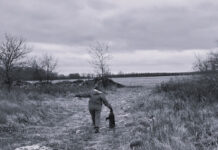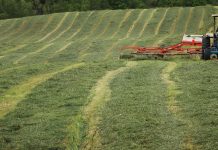In the past, aesthetic mowing of CRP grass cover was a widely accepted practice by many participants. Today, with more research and understanding, it has been shown that properly managed grass cover will reduce soil erosion, improve water quality and is more beneficial to wildlife than annually mowed grass covers.
Wildlife, especially grassland birds including pheasants and quail, and pollinators, such as bees and butterflies, view properly managed CRP cover as a source of food and habitat suitable to raise their young.
Attracting wildlife
Wildlife will not be attracted to CRP cover if plants are not allowed to mature. Game birds and bees are disappearing because of habitat loss. Properly managed grass cover does not include noxious weeds such as thistle and teasel or woody species like trees and multiflora rose.
These noxious weeds must be controlled. This can be done in several ways.
Mowing of CRP cover, not to exceed 20 percent of the total CRP acres in a field, is permitted. This activity must be included in your conservation plan and be conducted outside of Ohio’s primary nesting season (March 1-July 15). The location of this mowing should be changed from year to year.
Another option to control noxious weeds is by spot mowing affected areas or spot spraying of an approved herbicide. These treatments will have a minimal effect on the CRP practice cover’s ability to meet the purposes of erosion control, water quality and wildlife habitat.
Violating the contract
Unauthorized disturbance of CRP cover is considered a violation of the terms and conditions of the CRP contract and conservation plan. Violations could potentially result in hefty penalties including contract termination and refund of all contract-related payments.
Properly maintained CRP cover can be very attractive if noxious weeds and invasive species are controlled and grasses and wildflowers are allowed to mature. Please scout your CRP fields before weeds go to seed.
Contact your local FSA office for permission to spot treat your CRP grass cover during Ohio’s primary nesting season (March 1-July 15t. Plan to have your CRP cover assessed for the need of mid-contract management activities that are designed to enhance your CRP cover for wildlife.
Mid-contract management is a contractual obligation that is outlined in your CRP-1 Appendix and conservation plan.
Contact the FSA office for more information on proper maintenance and management of CRP practice cover.













